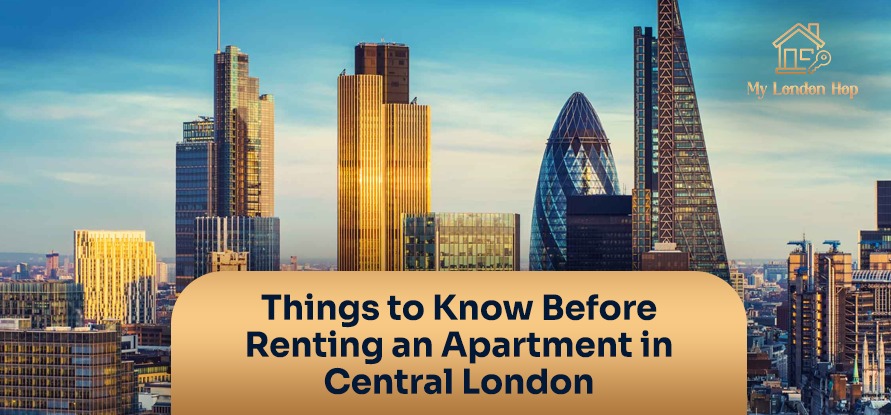
Renting in Central London offers both excitement and complexity. From world-class amenities and a bustling culture to sky-high prices and fierce competition, this region is unlike any other rental market in the UK. Whether you’re migrating for work, school, or lifestyle, understanding the ins and outs of the Central London rental scene is important to avoid costly mistakes.
This guide by mylondonhop will help you navigate everything from pricing and legalities to neighborhood choice and tenancy agreements, ensuring a smooth and informed rental experience in 2025.
1. Understand the Central London Rental Market
Renting in Central London is competitive and fast-paced, particularly in areas like Kensington, Chelsea, and Mayfair. Demand often outpaces supply, driving prices up.
Average Rent Prices in Prime Areas
| Area | Average Monthly Rent (1-Bedroom) |
| Kensington | £2,800+ |
| Soho | £2,300+ |
| Westminste | £2,600+ |
| Notting Hill | £2,500+ |
Prices can fluctuate based on amenities, proximity to Tube stations, and whether the flat is furnished.
Seasonal Rental Trends
Rental demand spikes in August and September due to student inflow and corporate relocations. For better deals, mylondonhop recommends considering move-in dates between November and February when the market cools slightly.
2. Define Your Budget Accurately
Before booking viewings, set a realistic monthly budget not just for rent, but for total living costs.
Costs and Deposits
- Holding Deposit: Typically, one week’s rent
- Security Deposit: Capped at five weeks’ rent
- First Month’s Rent: Paid in advance
Monthly Expenses to Consider
- Utilities: £150–£250
- Council Tax: Varies by borough
- Internet & TV Licence: ~£60
- Transport: Zone 1–2 travel card ~£150/month
3. Choose the Right Neighbourhood
Each part of Central London has a different vibe. Prioritise what matters most safety, commute, culture, or nightlife.
Safety and Local Amenities
- Family-friendly: Marylebone, Pimlico
- Trendy: Shoreditch, Fitzrovia
- Quiet Luxury: Belgravia, Mayfair
mylondonhop suggests using the Met Police crime maps and Google Street View to get a feel for the area before committing.
4. Know Your Tenant Rights in the UK
Understanding your rights helps prevent exploitation and ensures peace of mind during your tenancy.
Key Legislation: Assured Shorthold Tenancies (ASTs)
- Minimum fixed term (usually 6–12 months)
- Legal grounds for eviction
- Deposit protection rules
Landlords Must Provide:
- Gas Safety Certificate
- Energy Performance Certificate (EPC)
- ‘How to Rent’ guide
- Deposit protection documentation
5. Types of Rental Properties Available
mylondonhop outlines the major types:
- Studios: Efficient and ideal for solo renters
- 1-Bed Flats: Offer more privacy
- Shared Apartments: Budget-friendly but involve sharing
Most flats are furnished, but always confirm the availability of essentials like appliances, furniture, and storage.
7. Key Documents You’ll Need to Rent
Having your paperwork ready speeds up the process.
- Passport or UK Driving Licence
- Proof of employment or student offer
- Recent bank statements or payslips
For the self-employed, an accountant’s letter or SA302 may be required.
8. Viewing Tips: What to Look for During a Flat Tour
Don’t be dazzled by interiors mylondonhop advises checking for:
- Mold or damp
- Broken locks or windows
- Working smoke detectors
- Any signs of plumbing issues
Ask important questions like: Are utilities included? Who handles maintenance? What’s the internet speed?
9. Understand the Tenancy Agreement
Fixed-term vs. periodic contracts, break clauses, and renewal policies mylondonhop encourages tenants to have agreements reviewed before signing.
10. Safety, Security, and Building Standards
Ensure smoke alarms are installed, gas safety checks are up to date, and EPC ratings are reasonable (A-G).
Check for secure door entry, heating systems, and energy-saving features like double-glazed windows.
11. Moving In: What Happens After Signing
Before moving in, conduct a thorough inventory and take photographs of the flat’s condition. Ensure the landlord protects your deposit in a government scheme and sends you all the relevant documents within 30 days.
12. Common Mistakes First-Time Renters Make
Don’t fall for these traps: hidden service charges, unread fine print, and vague tenancy clauses. Always double-check subletting rules, repair responsibilities, and renewal conditions.
Conclusion
Renting an apartment in Central London in 2025 doesn’t have to be overwhelming. With expert guidance from mylondonhop, the process becomes more manageable and less stressful.
From understanding the market and preparing documents to spotting red flags and negotiating tenancy terms, staying informed is your greatest asset. Be proactive, stay cautious, and choose wisely mylondonhop is here to guide you every step of the way.

